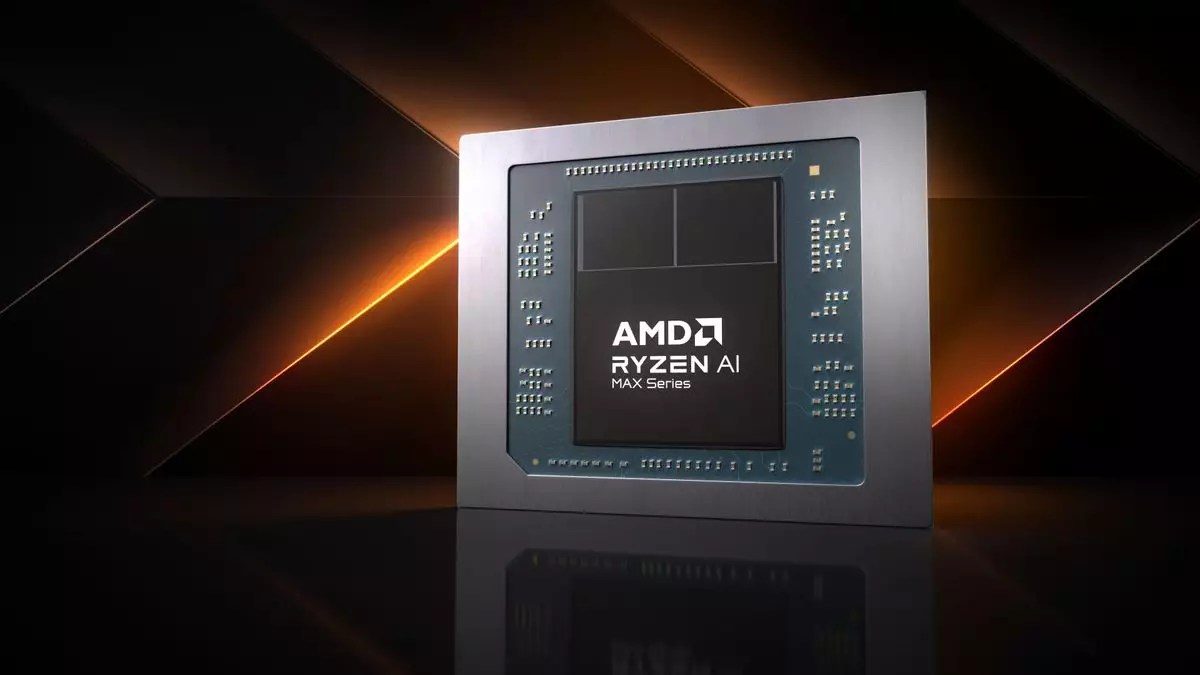AMD’s Strix Halo is drawing considerable attention, marking a significant development in the world of Accelerated Processing Units (APUs). Recent benchmarks from 3DMark Time Spy have surfaced, shedding light on the performance capabilities of this upcoming APU. With the tech community previously exposed to its Geekbench results last December, the latest benchmarks evoke a sense of cautious optimism. However, the figures suggest that AMD’s powerful chip may not fully meet the high expectations set by enthusiasts.
The initial benchmarks indicate the Strix Halo APU, featuring the AMD Radeon 8050S integrated GPU, achieved notable scores: a GPU score of 10,106 and a CPU score of 5,571. While these scores are impressive, they lead to comparisons with contemporary graphics solutions, especially those from NVIDIA, which reveals a deeper narrative about the APU’s prospects in gaming and performance.
Performance Comparisons: Where Does Strix Halo Stand?
When analyzing the GPU score of 10,106, it becomes apparent that the Strix Halo’s integrated graphics are positioned between the average scores of NVIDIA’s laptop RTX 4050 and RTX 4060. This placement raises essential questions about the APU’s ability to compete in the fast-evolving landscape of portable gaming solutions. Current conjectures suggest that if the benchmark holds up during real-world testing, Strix Halo could potentially match the performance of an RTX 4060 laptop.
Nonetheless, AMD previously hinted at hopes for performance akin to that of an RTX 4070 gaming laptop, leaving a gap between expectations and reality. This discrepancy calls for thorough evaluation as gamers seek robust performance metrics that justify their investment in AMD’s latest technology.
Beyond the numerical benchmarks, the technical specifications of the Strix Halo merit exploration. The APU employs Zen 5-based CPU complex chips (CCDs), which signifies a designed effort to push boundaries further than earlier models. This innovation is not merely a cosmetic overhaul—AMD’s departure from the Ryzen 9 9950X configurations aims to address prior limitations in power efficiency.
On the surface, a more efficient power consumption strategy promises enhanced battery life, a boon for gaming laptops that traditionally grapple with energy demands during intensive gameplay. However, the APU’s configurable wattage, scaling up to 120W, introduces complexities. Variations in power settings can significantly impact thermal performance and, importantly, the balance between power consumption and operational performance.
In a market dominated by discrete GPUs, AMD’s strides with integrated solutions deserve recognition. The competitive edge that Strix Halo aims to provide hinges on the notion of delivering a formidable gaming experience without the weight and size constraints associated with dedicated graphics cards. However, the early markings signal caution; consumers may desire a gaming experience that properly aligns with the robust expectations established by prior discussions rather than mere incremental improvements.
The challenge is twofold: while AMD seeks to innovate with Strix Halo, it must also contend with rapidly advancing competing technologies from NVIDIA, which continues to set performance benchmarks in the realm of portable gaming.
The Road Ahead for Strix Halo
As we look towards the anticipated market release of the Strix Halo, AMD faces a tall order. The positive reception of the benchmarks could pivot towards actual consumer demand, but only if real-world performance aligns with initial impressions. A performance ceiling lower than initially predicted could dampen initial excitement, leading users to weigh their options against other competitors in the gaming laptop space.
AMD’s Strix Halo holds significant promise as an evolution in APU technology. However, the preliminary benchmarks, while solid, suggest that the APU’s performance may need refinement to truly capitalize on market aspirations. As the release date approaches, both consumers and AMD itself will be watching with keen interest, eager to witness whether this APU can bridge the gap between hope and reality.


Leave a Reply